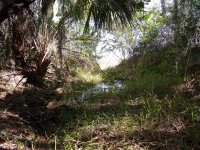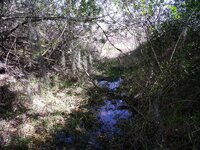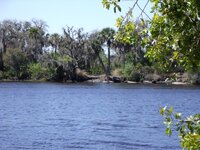ECS
Banned
CAPT HOOKER'S CACHE IN PARRISH,FLORIDA
Capt William B Hooker was an early settler in Manatee county,and owned 1000 acres around the Fort Hamer tract and the Manatee River,and was considered the "cattle king" of Florida in 1860.
On Jan 1,1861,Hooker sold his 10,000 head of cattle for $40,000,to James McKay who acted as agent for Jacob Summerlin.(McKay and Summerlin were involved with the CSA "cow calvary" out of Fort Meade,and has been detailed on many threads on TN).
When the Union began its occupation and raids on Florida's Gulf coast,Hooker buried part of his money(gold and silver specie) on his plantation,at "a boulder at the suns mid day shadow".
This was on his Fort Hamer tract,which he sold in 1867 to Charles A Turner for $1000,who named it Oak Hill,which became Parrish Florida.
Did Hooker recover his cache before the sale to Turner?
Then again,this is local lore and legend.
Capt William B Hooker was an early settler in Manatee county,and owned 1000 acres around the Fort Hamer tract and the Manatee River,and was considered the "cattle king" of Florida in 1860.
On Jan 1,1861,Hooker sold his 10,000 head of cattle for $40,000,to James McKay who acted as agent for Jacob Summerlin.(McKay and Summerlin were involved with the CSA "cow calvary" out of Fort Meade,and has been detailed on many threads on TN).
When the Union began its occupation and raids on Florida's Gulf coast,Hooker buried part of his money(gold and silver specie) on his plantation,at "a boulder at the suns mid day shadow".
This was on his Fort Hamer tract,which he sold in 1867 to Charles A Turner for $1000,who named it Oak Hill,which became Parrish Florida.
Did Hooker recover his cache before the sale to Turner?
Then again,this is local lore and legend.









